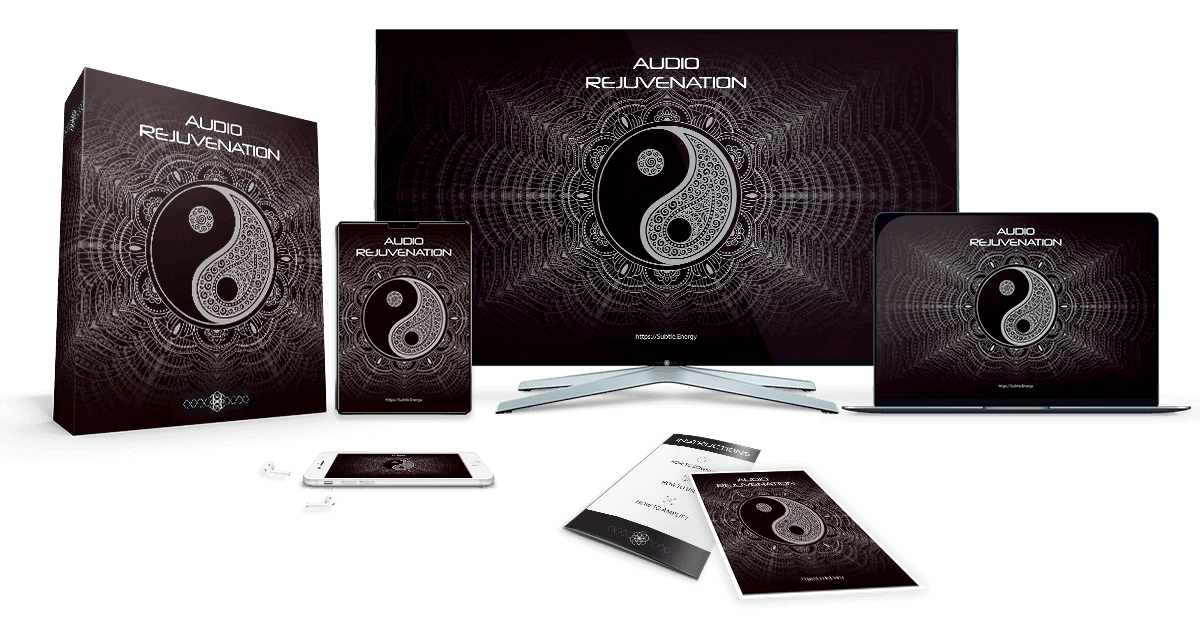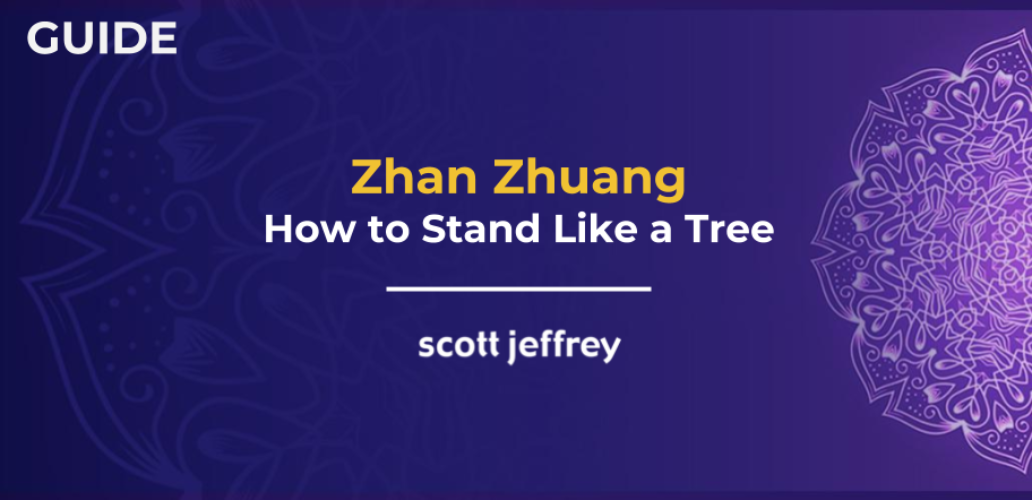
Cultivate Boundless Energy With An Ancient Standing Meditation Called Zhan Zhuang
by Scott JeffreyOverview: Zhan Zhuang is a simple yet powerful exercise to enhance energy, mental clarity, and internal strength. It’s an excellent standing meditation for improving your productivity and bringing more aliveness to everything you do.
______________
What if there was one thing you can do to increase your energy, mental clarity, and endurance in under ten minutes a day?
The method I will share with you has changed virtually everything I do: how I stand, sit, walk, eat, type, and read.
This method is Zhan Zhuang (pronounced “Jan Jong”), a dynamic form of standing meditation from ancient China.
Using this method, I eliminated frequent neck and back pain. And my physical energy and mental alertness continue to rise.
Curious? Let’s dive in …
Table of Contents
- The Way of Energy
- The Evidence of Chi
- Returning to the Body
- The Ancient Art of Standing Like a Tree
- The Benefits of Zhan Zhuang
- Zhan Zhuang is Ideal for Entrepreneurs
- A Gentle Focus on Your Center
- The Foundational Principle of Standing Meditation
- The Practice of Zhan Zhuang
- Basic Standing Meditation Posture Guidelines
- How to Stand
- How to Locate and Dissolve Tension
- Helpful Tips for Beginners
- How Long to Practice Standing Meditation
- What Zhan Zhuang Feels Like
- When Your Body Shakes …
- How to Close Your Standing Meditation
- Why Zhan Zhuang is an Ideal Exercise
- Boost Your Energy with a Digital App?
- Getting Started With Standing Practice
- Summary: Standing Like a Tree
- Suggested Reading
- Additional Resources
- Related Guides
The Way of Energy
Every ancient tradition has two key components: ideas and practices.
Philosophical ideas provide a set of ideals. The system of practices gives its practitioners a direct experience of those ideas.
In ancient China, Taoism was the dominant philosophical system, based on a text titled Tao Te Ching, which translates to “The Classic of the Way and the Power (or Virtue).”
The Taoist system of practices is called Qigong (or Chi Gung), meaning “life energy cultivation”.
There are thousands of practices within the Qigong system (3,600 is often the number given).
It’s made up of specific stretching, movements, stances, forms, and breathing techniques.
In fact, if you’re not already familiar with Qigong, you most likely know one of the sister forms within the Qigong system: Tai Chi.
The Chinese have been studying the energy of the human body for thousands of years.
Their examination of energy and its behavior led to the concept of Chi (or Qi).
Chi translates as air or breath, but it’s also used to represent energy, vital essence, and life force. (This notion of chi is likely what inspired George Lucas with the concept of “The Force” in Star Wars.)
The Chinese have long believed chi is the fundamental energy that sustains all life.
Even though many scholars associate alchemy with being a Western discipline, the original alchemists were Taoist practitioners.
These internal alchemists sought methods of cultivating this primal life-force energy within their bodies.
Qigong methods fall into one of three areas:
- Health (fundamental energy cultivation),
- Martial application (for developing power for the martial arts), and
- Spiritual development.
The method we’re reviewing today focuses on fundamental energy cultivation for health.
Zhan Zhuang: Cultivate Energy by Standing (PDF version)
The Evidence of Chi
If you’re unfamiliar with the concept or experience of chi, it’s natural to question its existence.
Chi can seem like “magical thinking,” something our rational minds judge.
When I first learned the practices of Zhan Zhuang, my progress was slow. My skeptical, intellectual mind wasn’t open.
And with a rigid mind, I was violating one of the principles of the practice.
Slowly, I had direct experiences of chi. As my body opened, I began feeling sensations of internal movement.
This movement is an increase in blood flow combined with air or chi.
Modern science’s understanding of chi is limited because it lacks the tools for measuring it.
But that’s changing. The study of the human biofield in energy medicine is leading to creative methods of measuring subtle energy fields.
There have also been many demonstrations by chi-cultivation practitioners that defy modern science.
(See this National Geographic episode or this brief documentary on a chi healer’s extraordinary abilities.)
But all this evidence remains anecdotal.
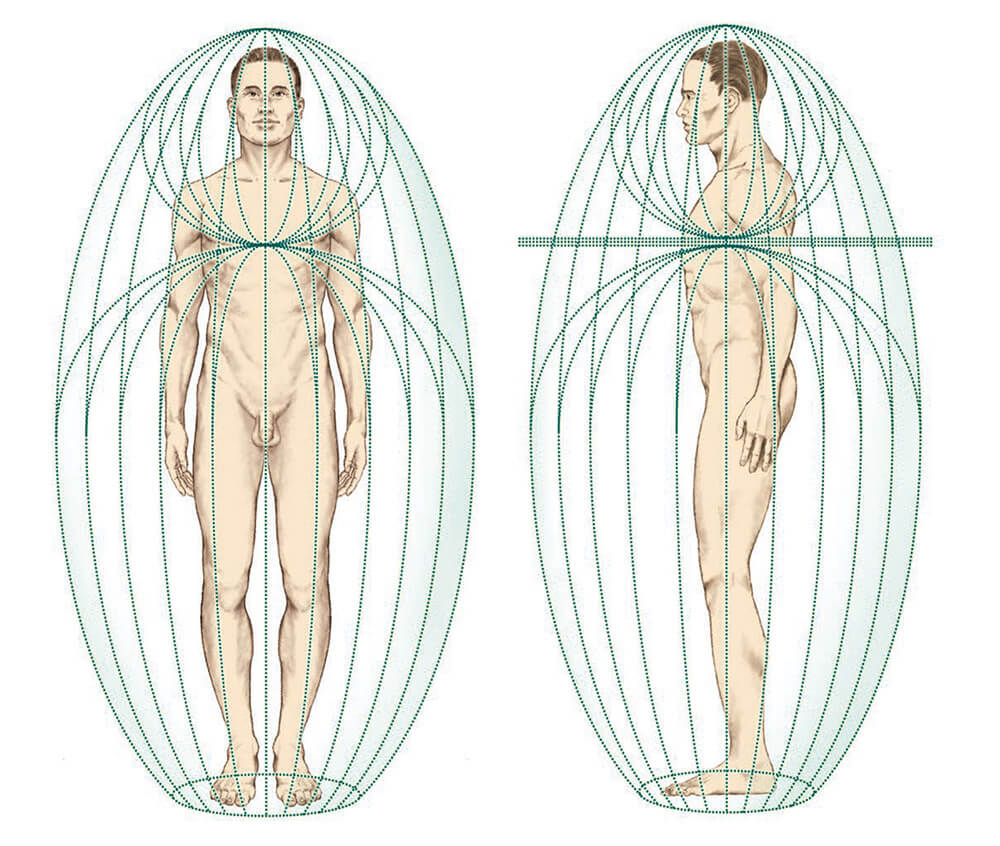
Returning to the Body
As Westerners, we value thinking, reason, and logic above all else.
Living in the information age, it’s fair to say most of us live in our heads.
Our prefrontal cortex sets us apart from the rest of the animal kingdom.
But we often use our capacity to think at the expense of our instincts, intuition, and feelings.
All of which provide necessary information and feedback about ourselves and the world we inhabit.
Much of the anxiety, stress, restlessness, and depression that plague us today are caused by being disconnected from our bodies.
When all our energy and attention is in our heads—with concerns about work, finances, health, family, future wellbeing, etc.—we develop anxiety and other neuroses.
In Toward a Psychology of Being, Maslow writes:
Humans no longer have instincts in the animal sense, powerful, unmistakable inner voices which tell them unequivocally what to do, when, where, how and with whom.
Deciding only with our thoughts—without consciously connecting with our instincts, feelings, and intuitions—has dire consequences for both individuals and our species.
Maslow’s observations about humans’ disconnection from instincts is accurate.
But borrowing methods like Zhan Zhuang we have the opportunity to reforge our mind with our body.
That’s what the ancient Taoists did. They reconnected with their instincts by observing nature.
These inner alchemists learned how to cultivate the natural energy inborn in all biological systems.
The Ancient Art of Standing Like a Tree
Although there are thousands of forms of Qigong, most of them use a derivative of Zhan Zhuang as a foundational practice.
Zhan Zhuang means “standing like a tree,” “pile standing,” or “post standing.”
As the name implies, Zhan Zhuang is a standing practice where one stands still, in an upright posture, as if standing like a tree.
The tree metaphor is apt as your legs and torso form the trunk of the tree. Your head and limbs form the branches.
And your feet, sinking and extending down beneath the ground, establish the roots.
At its core, Zhan Zhuang is a form of standing meditation. It offers many of the mental benefits of mindfulness training.
But in its standing postures, Zhan Zhuang goes much further.
The Benefits of Zhan Zhuang
Zhan Zhuang is a simple and elegant practice that offers astounding benefits to its practitioners.
The primary benefit, which doesn’t take long to begin receiving, is a dramatic increase in physical energy.
This increase in energy is the result of correcting your body’s posture. Improper posture is “normal” for almost all modern people.
It creates fatigue by slowing or stopping the flow of energy in the body.

By design, our chi flows freely throughout the body’s energetic pathways, called vessels or channels.
In Chinese medicine, there are eight vessels, twelve primary chi channels, and thousands of secondary channels branching out from the primary ones.
In chi theory, energetic blocks (stagnant chi) is the root cause of most physical and mental ailments.
The goal of Zhan Zhuang is to unblock stagnant chi and open all the body’s energetic pathways.
Health benefits derived from this standing practice include:
- Increased red blood cells
- Increased hemoglobin production
- Better nerve excitation
- Increased oxygen in the body
- Higher quality cerebral cortex excitation
- Improved sleep
For a detailed analysis of the medical benefits of Zhan Zhuang, see The Search for Wu by Dr. Yu Yong Nian. (The book is a poor English translation, but the content is excellent.)
Zhan Zhuang is Ideal for Entrepreneurs
Consider how much time you spend seated in front of a computer.
Every minute that your body is not in proper alignment, you’re losing vital energy.
Plus, the consequences of improper posture is cumulative.
I spent over 15 years slouched over a book or keyboard before I started this practice when I was about 35.
I was experiencing neck, shoulder, and back pain.
Sometimes from shoveling snow or chopping wood, but often from something as mundane as sneezing.
After about six months of practice, almost all of this pain disappeared. Years later, it hasn’t returned.
The increase in energy you’ll have throughout the day is undeniable. And you’ll be able to test that statement for yourself.
A Gentle Focus on Your Center
Zhan Zhuang helps rebalance your energy from your head to the center of your body.
The Chinese call this center the lower Dantian; the Japanese call it the Hara.
This center point is below the navel, down the width of two or three fingers.
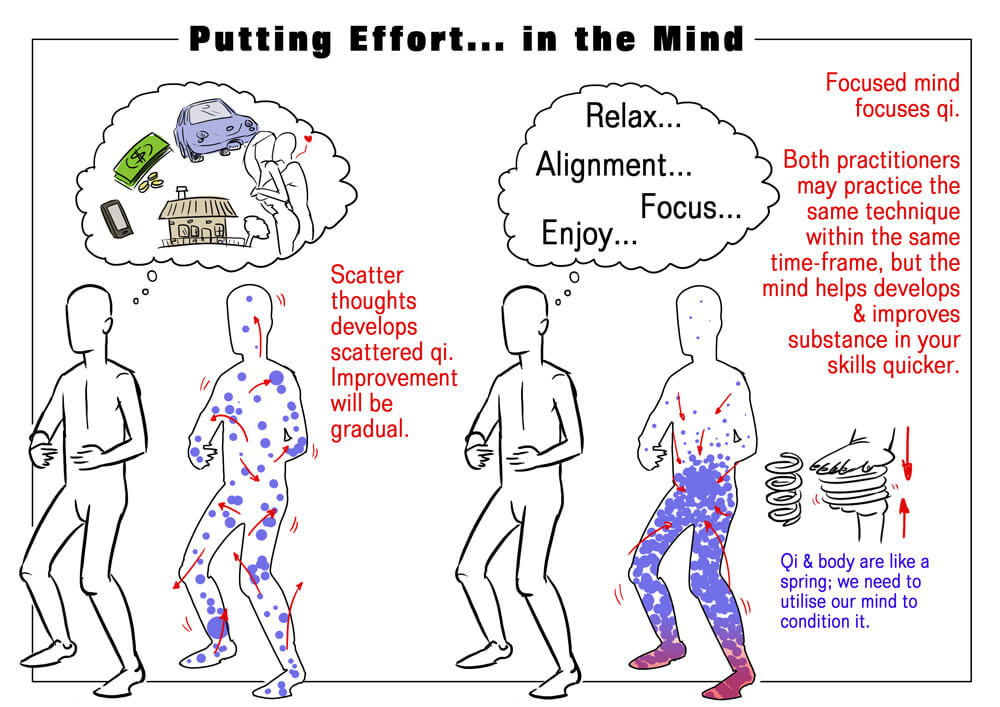
By learning to bring some of your awareness to this region, you begin integrating your body with your mind.
This helps you reconnect with your instincts and your gut feelings, leading to clearer thinking to make effective decisions.
You gain more energy, improving your focus, concentration, and effectiveness at whatever you do.
See: 15 Powerful Centering Methods to Reduce Anxiety, Increase Focus, and Make Better Decisions
The Foundational Principle of Standing Meditation
Many people will feel the powerful effects of Zhan Zhuang right away.
If you show it to a child, for example, they are likely to get it instantly.
For others, it may take time before they’ll experience the flow of chi. (It took me many months.)
The deciding factor is your ability to relax.
I did not understand how much tension I was holding in my body until I practiced Zhan Zhuang.
As the practice progressed, I could isolate tension in different regions of my body and release them. This process continues still, years later.
As you learn to relax and tune into your body, your kinesthetic intelligence increases.
Your mind becomes more aware of your body and how it stabilizes to find its equilibrium.
The Practice of Zhan Zhuang
The actual practice of Zhan Zhuang is so simple it’s easy to discount its value. You stand still. That’s it!
But to stand still, you must first stand correctly, in the proper body alignment.
The body is a natural cylinder. Most animal species have a cylinder too.
Other animal’s cylinders are horizontal, supported by four limbs. It’s very stable.
Our cylinder is upright. This upright posture frees our forelimbs for grasping and manipulating nature.
But it’s more challenging to balance a vertical cylinder on two legs than it is to balance a horizontal cylinder on four.
Zhan Zhuang practice makes systematic improvements in our ability to maintain proper equilibrium.
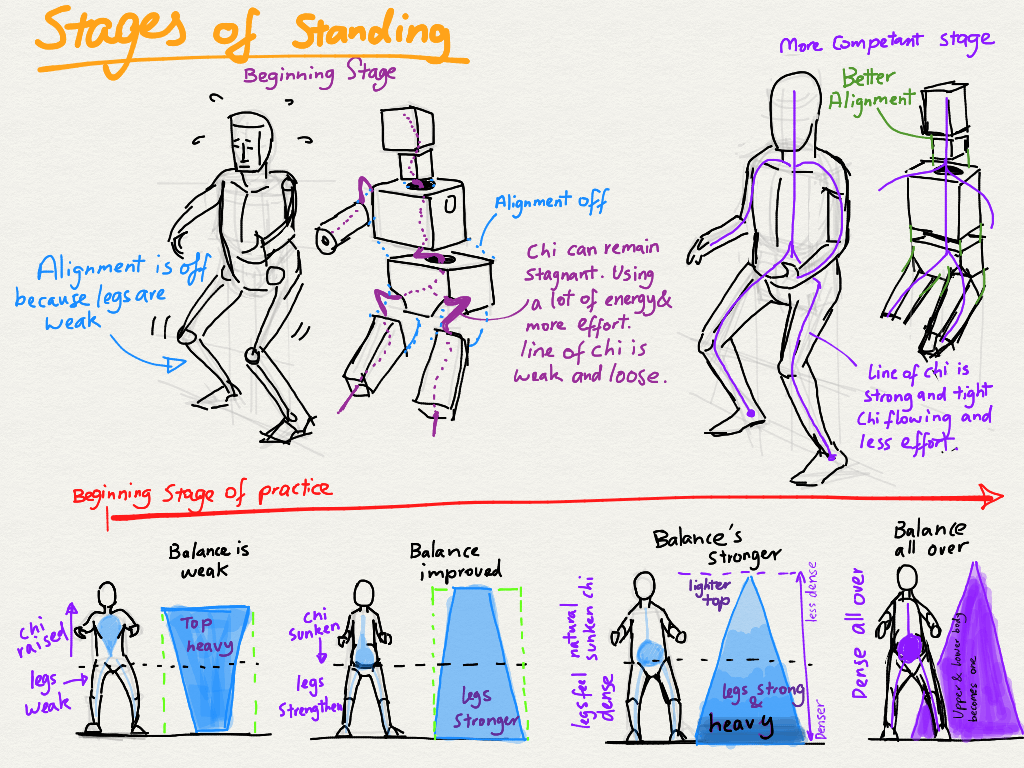
Gravity is always exerting a downward force on our erect posture.
With improper alignment, the muscles in our body are in a constant juggling act in an attempt to maintain equilibrium.
This results in a constant drain on our energy.
With proper alignment, the skeleton structure creates a natural vessel for us to maintain and cultivate a reservoir of energy that circulates around the body’s meridians.
The goal of this practice is to hold your body in a relaxed, extended, and open position.
Your mind will be empty, active, and alert.
Although you may feel like it takes work to achieve the correct posture, you want to use minimal effort when maintaining this posture.
But this relaxation comes after you’ve learned how to maintain the correct alignments.
Basic Standing Meditation Posture Guidelines
Be patient as you learn the correct posture and alignment. Go over each detail carefully.
When I first learned how to practice Zhan Zhuang from my teacher, I was overwhelmed by the number of details of alignment that I needed to keep in mind.
Zhan Zhuang: Cultivate Energy by Standing (PDF version)
It’s helpful to remind yourself that you don’t need to “get it right” at first.
That idea will only create internal tension, which will inhibit the benefits of this practice.
You might even consider skipping this section for now and returning to it once you’ve experimented with the practice a few times.
1) Stand with feet pointed straight ahead, parallel to each other, and firmly on the ground at shoulder width.
Grasp the ground with your feet while keeping them elastic with the tip of the toes slightly extended.
2) Extend upward from the crown of your head into the sky.
You want your head to feel like it’s floating above your neck, effortlessly suspended above your spine.
3) Allow your hips to slightly sink down as if you were sitting at the edge of a high barstool.
This will straighten the spine in your lower back. Most people have a natural “s” curve in their spine.
One of the primary aims of this standing posture is to reduce the curvature of the spine as much as possible to open the flow of energy. This occurs over time by maintaining the correct posture.
4) Keep your knees bent slightly.
Your knees should never be “locked” (too straight) and should never go beyond your toes (too bent).
5) Relax your shoulders.
Don’t arch your back like in a military posture. Instead, do the exact opposite by rounding your upper back and making your chest slightly concave.
6) Let your arms rest comfortably at your sides.
Imagine a small pea-sized ball under each armpit to create a small space.
Zhan Zhuang has 200 postures with different arm and leg positions, but in the beginning, you need not concern yourself with your arms. Just keep your hands and arms relaxed and loose, as they hang to your sides.
7) Let the palms of your hands face toward your hips.
Because of the small space under your armpits, your hands won’t touch your hips; instead, they will hang about two to three inches from your hips.
8) Tuck your chin inward.
Roll it inward and up toward the top of your head. This opens the area where your spine meets your skull.
9) Keep your eyes slightly open with a soft gaze ahead of you.
Keeping your eyes open can lead to distractions and closing them can lead to tiredness.
A soft gaze with eyes almost closed provides the optimal conditions when you’re first learning this or any other meditation.
10) Place your tongue gently on your palate.
Your lips are barely closed. Relax your jaw muscles.
I recommend focusing on one or two points of alignment at a time, adding more points of alignment when you’re ready.

How to Stand
As stated above, the key to Zhan Zhuang is relaxation.
A few pointers to assist you:
- Breathe comfortably, slowing, and quietly through your nose. Feel your whole body relax deeper with every exhale.
- Avoid forcing your breath; keep it calm and steady. Eventually, you will not pay attention to your breath.
- Avoid using physical strength. Rest yourself on your skeletal structure instead.
- Be gentle with yourself. “Trying” to stand will increase tension.
Your first aim is to sink all of your muscle tension into your feet and into the ground below them. To assist you in this effort, try placing all of your attention on your feet first.
Wang Ziang Zhai, considered the foremost master and father of contemporary forms of Zhan Zhuang, explains:
In the study of the method of standing … the most important thing is to avoid exerting ourselves either mentally or physically. If we use physical strength, our energy, or qi, will be congested and blocked. When our qi is blocked, our intention, or Yi, is stopped. When our intention is blocked, our spirit, or shen, will be distracted. And when our spirit is distracted, we will be deluded into thinking we’re making progress while actually we’re regressing.
See: Powerful Centering Methods to Reduce Anxiety, Increase Focus, and Make Better Decisions
How to Locate and Dissolve Tension
Once you feel you’re in the correct standing posture, you can turn your attention to the various places you’re holding tension throughout your body.
- Start at the top of the head and scan your body downward. Notice any tension in your forehead, jaw, mouth, neck, shoulders, and so on.
- When you locate an area of tension, breath into that area and allow the tension to dissolve and sink downward.
- If the tension doesn’t release after breathing into it several times, move on to the next area.
- Once you have done your best to release the tension, you can place a part of your awareness (perhaps 50%) on the Dantian, two inches below the navel.
Periodically remind yourself to stay loose and sink downward (without dropping your head).
Helpful Tips for Beginners
In the beginning, getting your skeletal structure in proper alignment can take time, so be patient with yourself.
Once you are familiar with this basic standing posture, it will become second nature to you.
When you’re first starting out:
- Practice in front of a mirror from several angles to get a better sense of your body positioning.
- If you’re having trouble releasing tension, try raising up your shoulders and tensing your whole body for a few seconds. Then release the tension.
Putting your attention on your feet and feeling the weight of your body on the bottom of them will help you redistribute your energy away from your head. This provides a more calm, clear mind, ideal for productive work.
You can use this posture when you’re waiting in a line, pumping gas, or any time you’re standing.
You can also use the same principles for walking and sitting at your desk.
How Long to Practice Standing Meditation
To gain the optimal health benefits of standing practice, 40 minutes per day is prescribed.
However, many teachers and practitioners suggest starting with only 1 or 2 minutes of practice.
You’ll frequently build new tension over time as your body falls out of proper alignment.
If you know you will stand for only 2 minutes, your mind is less likely to drift its attention from the practice.
Just standing in this manner for a few minutes when you’re stressed, can calm your mind and shift your level of energy and mental clarity.
In 10 minutes of practice, which you can build to over time, you can recharge and gain a new perspective on whatever you’re doing.

What Zhan Zhuang Feels Like
Professor Yu Yong Nian classified the various sensations practitioners often experience within the first six weeks of practice.
These sensations include numbness, aching, warmth, shaking, asymmetry, and relaxation.
You may feel numbness, tingling, pulsations, warmth, or coolness in your hands, feet, head, or other portions of your body.
These sensations are signs the energy is attempting to flow freely through the body.
A curiosity in these sensations leads to further internal discoveries about your body.
If you’re successful in releasing tension and sinking your energy downward, your feet will get heavy. It may feel as though they are glued to the ground.
When you release tension in your upper body, your arms may fill up with energy. It can feel like they are being propelled away from your body by a magnetic force.
When Your Body Shakes …
One of the most notable experiences many people have in the early stages of this practice is trembling and shaking. It can be a shocking experience.
I would have been alarmed when this occurred if I wasn’t warned about it in advance.
My body would often shake uncontrollably for minutes at a time.
This experience can happen within the first few minutes of practice.
This shaking is therapeutic. And if it happens to you, allow it. It will stop eventually.
From the perspective of bioenergetics, this is your “body armor” breaking down.
When under any traumatic or stressful experiences, all mammals shake.
Humans, however, have a tendency to repress or push down this response to intense negative emotions.
This leads us to store the trauma in our bodies.
There are various trauma release exercises available designed to induce these tremors to help people release stored trauma from their bodies.
With Zhan Zhuang, these tremors often occur by standing still in the proper body alignment.
How to Close Your Standing Meditation
When you’ve completed your session, slowly rock your feet back and forth and side to side.
Gently shake and tap around your body to release any stagnant energy that may have built up during your practice.
Why Zhan Zhuang is an Ideal Exercise
When performing most exercises like running, your heart and respiratory rate quicken until they reach a point where you have to stop.
This leaves you fatigued, requiring an extended period of recovery. Plus, most of these exercises can damage your body over time.
With Zhan Zhuang practice, your body will still get fatigued (if you do it long enough).
However, your heart rate barely changes and your respiration improves.
And your blood circulation becomes more regular. Done properly, you’ll be more energized after even brief practice sessions.
Imagine an exercise that has all the health benefits of aerobic exercise, but that leaves you relaxed and energized.
Boost Your Energy with a Digital App?
Eric Thompson is an inventor and former co-founder of iAwake Technologies. A few years ago, Eric started Subtle Energy Sciences.
Using quantum resonance technology, Eric engineered a method of encoding digital images with specific energy signatures.
The result is what he calls Digital Mandalas or Quantum Energy Apps, which combines beautiful digital art with layers of various energy-related sound technology.
If you’re open to exploring new technologies as an aid to supporting your self-development, check out Eric’s Audio Rejuvenation program—a combination of digital mandalas and audio tracks specifically designed to help replenish your primal essence.
Use code CEOSAGE30 for a 30% discount on Audio Rejuvenation.
I always have at least one digital mandala running on my desktop and my other devices.
I’m using the Increase Qi energy app as I write this.
Now, if you don’t have energetic sensitivity, you may feel nothing at first. If that’s the case, Eric offers various ways to augment and optimize the effects.
(Disclaimer: affiliate links above.)
Getting Started With Standing Practice
When you’re just starting out, it’s helpful to watch something as you stand.
With your mind distracted, there’s less internal resistance to standing.
Here’s day 1 of a 10-part video series by Lam Kam Chuen who walks you through the basics of Zhan Zhuang. Stand while you watch!
Summary: Standing Like a Tree
Zhan Zhuang is a standing meditation where you stand still. The initial goal is to relax and sink all the tension in your body beneath your feet.
This standing method cultivates the body’s natural energy called chi.
It’s a simple practice with extraordinary mental and physical benefits. You can practice it anywhere.
For creative professionals and knowledge workers, Zhan Zhuang offers a fast and effective means to recharge your energy, reduce stress, gain superior mental clarity, and stay focused.
Suggested Reading
The Way of Energy by Lam Kam Chuen
Opening the Energy Gates of Your Body by Bruce Francis
A Comprehensive Guide to Neigong by Damo Mitchell
Additional Resources
The Foundation of Internal Martial Arts by Karel Koskuba (article)
The Scientific Basis of Qigong and Energy Medicine (website)
Understanding Qigong and Chi (3-part Youtube series)
Standing with Lam Kam Chuen Days 1 – 10 (Youtube series)
Related Guides
10 Best Energy Supplements to Supercharge Your Performance
Powerful Centering Methods to Reduce Anxiety, Increase Focus, and Make Better Decisions

